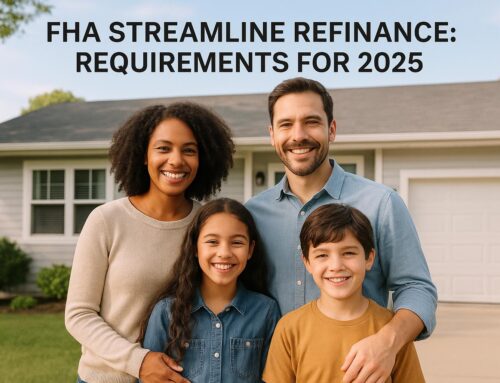Should you use a HELOC or a home equity loan to finance a vacation home? It depends on your needs. Here’s a quick breakdown:
- HELOC (Home Equity Line of Credit): Works like a credit card tied to your home equity. Borrow as needed during a draw period (usually 10 years), pay interest only on what you use, and face variable interest rates. Best for ongoing or unpredictable expenses like renovations or maintenance.
- Home Equity Loan: Provides a lump sum upfront with fixed interest rates and predictable monthly payments. Ideal for large, one-time purchases like a down payment or major renovations.
Quick Comparison
| Feature | HELOC | Home Equity Loan |
|---|---|---|
| Fund Access | Revolving line of credit | One-time lump sum |
| Interest Rate | Variable | Fixed |
| Payment Structure | Interest-only during draw, then principal + interest | Fixed from the start |
| Flexibility | High – borrow as needed | Low – fixed funds |
| Best For | Ongoing or staggered expenses | Large, one-time expenses |
Key takeaway: Choose a HELOC for flexibility and ongoing costs. Opt for a home equity loan if you need stability and a fixed amount upfront. Both options use your home as collateral, so plan carefully to avoid risks like foreclosure.
HELOC vs Home Equity Loan: The Ultimate Comparison
Main Differences Between HELOCs and Home Equity Loans
When considering home equity financing options for a vacation home, it’s essential to understand how HELOCs (Home Equity Lines of Credit) and home equity loans differ. While both let you tap into your home’s equity, they function in distinct ways, shaping your borrowing experience and financial approach.
How a HELOC Works
A HELOC works as a revolving line of credit secured by your home’s equity. Instead of receiving a lump sum upfront, you can borrow as needed, up to a set credit limit.
HELOCs have two key phases. During the draw period (usually 10 years)[3], you can borrow, repay, and borrow again, with interest charged only on the amount you’ve used[4]. Once the draw period ends, the repayment period begins (typically 20 years)[3]. At this stage, you can no longer borrow additional funds and must repay both the principal and interest. HELOCs often come with variable interest rates, meaning your payments can change based on market conditions. This flexibility makes them a strong choice for ongoing expenses like home renovations or furnishing your vacation home.
"A home equity loan gives you an upfront lump sum that you repay in fixed payments with a fixed interest rate. A HELOC lets you tap into equity as needed up to a certain limit." – Miranda Crace, Senior Section Editor, Rocket Companies[5]
How a Home Equity Loan Works
A home equity loan, on the other hand, provides a lump sum of cash upfront at the time of closing[4]. From the first month, you’ll make fixed monthly payments that cover both the principal and interest.
Unlike HELOCs, home equity loans come with fixed interest rates, ensuring your payments remain consistent throughout the loan term. This predictability can simplify budgeting for your vacation home investment. However, like a primary mortgage, home equity loans may involve closing costs, including appraisal and origination fees[4]. This setup is ideal when you need a specific amount of money for a one-time purchase, such as buying the vacation home itself or covering major repairs.
Side-by-Side Comparison
| Feature | HELOC | Home Equity Loan |
|---|---|---|
| Fund Access | Revolving line of credit | One-time lump sum at closing |
| Interest Rate | Variable | Fixed |
| Payment Structure | Interest-only during draw period, then principal plus interest | Principal and interest from day one |
| Flexibility | High – borrow, repay, and reborrow | Low – fixed funds and payments |
| Best For | Ongoing expenses | Large, one-time purchases |
| Payment Predictability | Variable payments | Fixed monthly payments |
The main difference comes down to flexibility versus predictability. If you anticipate ongoing expenses like renovations or maintenance, a HELOC offers the adaptability you need. On the other hand, if you have a clear amount in mind for a one-time purchase, a home equity loan provides the stability of fixed payments. Choose based on your financial needs and the nature of your vacation home investment.
Interest Rates and Costs
Interest rates play a key role in determining your monthly payments, long-term financial planning, and the overall cost of financing a vacation home. The type of rate structure you choose – variable or fixed – can significantly impact your borrowing experience. Below, we break down how these two options affect vacation home financing.
Variable Rates for HELOCs
Home Equity Lines of Credit (HELOCs) come with variable interest rates that change based on market conditions, typically tied to the prime rate. This means your monthly payments can fluctuate over time. While this introduces some uncertainty to your budget, it also offers the potential for savings when rates decrease.
As of January 6, 2025, the average HELOC rate nationwide was 8.36%[9]. However, rates can differ widely depending on the lender. For instance, U.S. Bank‘s HELOC rates ranged from 7.95% APR to 11.60% APR as of December 19, 2024[7]. These rates are influenced by Federal Reserve policies and the current 23-year high in the federal funds rate, but experts anticipate rate cuts as early as June 2025[8].
"By assessing market conditions, if the buyer can sustain fluctuations in interest rates, a HELOC makes sense."
– Alex Blackwood, CEO and co-founder of Mogul Club[8]
During the draw period of a HELOC, you typically pay interest-only on the amount you’ve borrowed, rather than on your full credit limit[9]. This can result in lower initial payments, which may increase later during the repayment period.
Fixed Rates for Home Equity Loans
Home equity loans provide the stability of fixed interest rates, ensuring your monthly payment remains consistent throughout the term of the loan. This predictability makes it easier to plan your finances over the long term.
As of May 28, 2025, average rates for a $30,000 home equity loan varied by loan term:
| Loan Term | Average Rate |
|---|---|
| 5-year | 8.24% |
| 10-year | 8.39% |
| 15-year | 8.32% |
Nationwide, the average home equity loan rate stood at 8.41% as of January 6, 2025, slightly higher than the average HELOC rate[9].
"If the buyer wants stability and predictable payments to lock in a rate, the second mortgage makes sense."
– Alex Blackwood, CEO and co-founder of Mogul Club[8]
Greg McBride, Chief Financial Analyst at Bankrate, predicts that home equity loan rates could average 7.90% by the end of 2025, assuming the Federal Reserve cuts rates three times as expected[10]. However, unlike HELOCs, home equity loan borrowers won’t benefit from these rate reductions unless they refinance.
Cost Impact on Vacation Home Financing
The rate structure you choose can have a significant impact on your overall financing costs and strategy. Recently, HELOC rates have been declining more quickly than home equity loan rates[9], making them an appealing option for borrowers comfortable with variable rates. For short-term borrowing or quick repayment, HELOCs can offer savings with their lower initial (interest-only) payments.
However, the variable nature of HELOC rates requires careful consideration. Rising rates could lead to higher monthly payments, potentially straining your budget for vacation home expenses like maintenance, property taxes, or utilities.
Both HELOCs and home equity loans typically involve closing costs, which range from 2–5% of the loan amount[11]. Additionally, lenders often impose borrowing limits, which can influence your financing strategy.
"Homeowners are sitting on a record amount of home equity, but interest rates are still high, so borrow only with intent and a game plan for repayment. This is especially important on home equity loans as you’re borrowing all the money at the outset and interest begins accruing immediately. Make sure the payment fits comfortably within your budget before signing on the dotted line."
– Greg McBride, Chief Financial Analyst, Bankrate[10]
When financing a vacation home, it’s essential to weigh your risk tolerance and cash flow needs. If you’re planning gradual renovations and can manage potential payment fluctuations, the flexibility of a HELOC might be worth considering. On the other hand, if you need a lump sum for a major expense and prefer the stability of fixed payments, a home equity loan may better suit your needs, even if it comes with slightly higher rates.
Flexibility and Best Uses
When deciding between a HELOC and a home equity loan for your vacation home, the right choice often depends on how you plan to use the funds. Each option has its strengths, tailored to different financial needs and spending habits. Let’s break down how these options align with specific strategies for vacation homeowners.
HELOCs for Ongoing or Unpredictable Expenses
A HELOC works like a revolving credit line, making it a great fit for vacation homeowners dealing with ongoing or staggered costs. You can borrow as needed during the draw period, repay, and borrow again – giving you flexibility for projects that unfold over time. For instance, this can be incredibly useful for handling phased renovations, unexpected repairs, or seasonal maintenance.
One major perk of a HELOC is that you’re only charged interest on the amount you actually borrow, not the full credit limit. This makes it a cost-effective choice for expenses that come up sporadically. Whether it’s repairing a roof damaged by a storm or upgrading your vacation home’s heating system before winter, a HELOC offers the adaptability to address these needs as they arise.
Home Equity Loans for Big, One-Time Projects
On the other hand, a home equity loan is better suited for large, one-time expenses. With this option, you receive a lump sum upfront and repay it in fixed monthly installments. This setup is ideal for homeowners who prefer predictable payments and need funding for major, planned projects.
For example, you might use a home equity loan to finance a significant renovation, such as adding a new deck or installing high-end outdoor features. The fixed interest rate ensures your monthly payments remain consistent, offering peace of mind when managing expenses across multiple properties.
Andrina Valdes, COO of Cornerstone Home Lending, highlights the appeal of this approach:
"A home equity loan can be bigger and cheaper than other types of funding… It’ll typically come with a lower interest rate than you’ll get when taking out a personal loan or a line of credit." [12]
Example: Renovating a Vacation Home
Picture this: you’re renovating a lakeside cabin with a $40,000 budget for a kitchen remodel, bathroom upgrades, and a new deck. Here’s how each option might play out:
- HELOC: You set up a $40,000 credit limit and draw funds as needed for each phase of the project, paying interest only on the amounts you use.
- Home Equity Loan: You receive the full $40,000 upfront, with fixed monthly payments that make it easy to stick to your budget.
Each option has its merits – your decision should depend on whether you value flexibility or prefer the stability of fixed payments.
sbb-itb-8115fc4
Repayment Terms and Monthly Payments
When choosing between a HELOC and a home equity loan for your vacation home, understanding how repayment works is crucial. The repayment structure directly affects your monthly cash flow and can influence your overall financial strategy.
HELOC Draw and Repayment Periods
A HELOC is divided into two main phases that shape how you make payments. During the draw period – usually lasting 5 to 10 years – you can access funds as needed and typically only pay interest on the amount borrowed [14]. This flexibility can be especially helpful for seasonal expenses or sudden repairs.
Once the draw period ends, you transition to repaying both the principal and interest [1]. At this stage, borrowing additional funds is no longer an option, and monthly payments can increase significantly.
HELOC payments are also tied to interest rate changes. During the draw phase, rate hikes can increase your interest payments, and when combined with principal repayment later, these fluctuations can make budgeting more challenging [13]. Debra Shultz, Vice President of Lending at CrossCountry Mortgage‘s The Shultz Group, explains:
"HELOCs are tied to the prime rate, which follows the movement of the Fed funds rate. Every time the Fed raises or lowers the Fed funds rate, HELOC rates tied to the prime follow." [15]
With a HELOC, it’s essential to prepare for payment adjustments as you move from interest-only payments to full repayment.
Home Equity Loan Payment Schedules
Home equity loans, on the other hand, offer a simpler and more predictable payment structure. From the start, you’ll make fixed monthly payments that cover both principal and interest. This consistency makes budgeting straightforward.
As Alex Blackwood, CEO and co-founder of Mogul Club, points out:
"If the buyer wants stability and predictable payments to lock in a rate, the second mortgage makes sense." [8]
The fixed payment amount remains the same throughout the loan term, which typically spans 15 to 30 years. Even if market interest rates rise or fall, your monthly payment won’t change. This stability can be particularly helpful when managing seasonal rental income or other irregular property-related expenses.
Payment Comparison
| Feature | HELOC | Home Equity Loan |
|---|---|---|
| Initial Payment Structure | Interest-only during draw period | Principal and interest from the start |
| Payment Predictability | Variable, changes monthly | Fixed for the entire term |
| Short-Term Cash Flow Impact | Lower initial payments | Higher initial payments |
| Long-Term Planning | Less predictable due to rate fluctuations | Highly predictable |
| Payment Phases | Two distinct phases (draw and repayment) | Single consistent payment schedule |
These differences in payment structures are key when planning your cash flow and budgeting for your vacation home. If you’re balancing a primary mortgage alongside your vacation property, a HELOC’s lower initial payments during the draw period might provide some breathing room. However, you’ll need to be ready for higher payments once the repayment phase kicks in. On the flip side, home equity loans require a larger upfront commitment but offer the peace of mind of fixed payments.
John Aguirre, a Mortgage Broker at Loantown, stresses the importance of understanding HELOC terms:
"The caps will tell you how much the rate can change at your first adjustment, how much the rate can change at subsequent adjustments, and the maximum amount the rate can go up over the life of the loan." [15]
Many HELOCs include rate caps – for example, credit unions often set caps at 18% [15]. These caps can shield you from extreme rate hikes, but it’s vital to account for possible payment increases when planning your budget. This variability highlights the contrast between the fluctuating nature of HELOCs and the stability offered by home equity loans.
Tax Rules and Risks
When considering vacation home financing, it’s essential to weigh the tax implications and potential risks tied to using your property as collateral. These factors can significantly influence the overall cost and risk of your financing decision.
Tax Deduction Rules
The Tax Cuts and Jobs Act (TCJA) of 2017 introduced specific rules about interest deductions for home equity loans and HELOCs. According to the IRS, interest on these loans is deductible only if the funds are used to buy, build, or make substantial improvements to the property securing the loan. This applies to both primary residences and vacation homes:
"Interest on home equity loans and lines of credit are deductible only if the borrowed funds are used to buy, build, or substantially improve the taxpayer’s home that secures the loan." [24]
If the loan proceeds are used for unrelated personal expenses – like paying off credit card debt or funding a vacation – the interest won’t qualify for a deduction [19]. To take advantage of these deductions, you must itemize your tax return instead of opting for the standard deduction [17].
There are limits, too. For loans taken out after December 15, 2017, the total mortgage debt eligible for interest deductions is capped at $750,000 for single filers and married couples filing jointly, or $375,000 for married couples filing separately [16][21]. Loans secured before this date may follow older rules, potentially allowing deductions even if the funds were used for other purposes [17][18]. To ensure compliance, keep detailed records, such as receipts or contractor agreements, that prove the funds were used for qualifying home improvements [17][20].
While these tax benefits can reduce your borrowing costs, remember that they come with strings attached – and require careful documentation.
Collateral Risks
The potential tax savings from home equity loans and HELOCs come with a significant trade-off: collateral risks. Both financing options use your vacation home as collateral, meaning missed payments could lead to foreclosure. Lenders often view second homes as riskier investments, as borrowers are more likely to prioritize their primary residence if financial trouble arises [2]. This perceived risk often results in higher interest rates for vacation home financing, particularly for HELOCs [2].
HELOCs, in particular, carry extra risks due to their structure. They typically feature variable interest rates, meaning your repayment amounts can fluctuate unexpectedly. Additionally, the revolving credit nature of HELOCs might tempt borrowers to overspend, leading to financial strain [23]. As Marguerita Cheng, CFP and CEO of Blue Ocean Global Wealth, advises:
"In a rising-interest-rate environment, it may be better to have a home equity loan to lock in a fixed rate." [23]
Declining property values add another layer of risk. If the market value of your vacation home drops significantly, you could find yourself "underwater" on your loan – owing more than the property is worth [6]. With average home equity balances reaching $313,000 as of March 2025 [22], the stakes are high for many homeowners.
To minimize risks, carefully assess all costs before committing to a loan. This includes factoring in your current mortgage, potential new loan payments, and any HELOC repayments. Also, consider how variable interest rates or seasonal income fluctuations – common with vacation rental properties – might affect your ability to repay [2].
The choice between a home equity loan and a HELOC often boils down to predictability. Home equity loans offer fixed payments, which simplify budgeting and reduce the risk of surprise payment increases. On the other hand, while HELOCs provide initial flexibility, their variable rates can lead to unexpected financial strain as rates rise or draw periods end. Understanding these distinctions is key to making an informed decision.
How to Choose the Right Option
Selecting the best financing option for your vacation home depends on your individual financial situation and borrowing goals. Using the comparisons above as a foundation, here are the key factors to guide your decision-making process.
What to Consider
Start by evaluating your financial stability to ensure you can manage the payments over time. Since both financing options use your vacation home as collateral, consistent payments are non-negotiable. Most lenders allow you to borrow up to 80% of your home’s value, subtracting your current mortgage balance. For example, if your vacation home is valued at $500,000 and you still owe $200,000, you could potentially access $200,000 in equity [25].
Think about the scope of your project. A HELOC is ideal for expenses that arise over time, such as ongoing improvements like landscaping or interior updates. On the other hand, a home equity loan works better for large, one-time expenses, like a $75,000 kitchen renovation that requires an upfront payment [26].
Your comfort with interest rate changes is another critical factor. As Greg McBride, chief financial analyst at Bankrate, explains:
"A HELOC offers flexibility to borrow as you need the money and repay based on your cash flow, typically for the first 10 years, which may be well-suited to a home improvement project where costs will be incurred in stages." [28]
However, this flexibility comes with variable rates, which means your payments could rise unexpectedly. If you prefer stability and predictable payments, a home equity loan with its fixed rate might be a better fit.
Consider how you want to access funds. If you’re tackling a big, one-time expense – like consolidating high-interest debt or making a major purchase – a home equity loan’s lump sum makes sense. But if you anticipate ongoing costs or want a financial safety net, a HELOC’s revolving credit structure offers more flexibility.
Don’t forget to account for tax implications, as discussed earlier, and keep detailed records of how you use the funds. Also, factor in borrowing costs. Closing costs for home equity loans typically range from 2% to 5% of the loan amount [6]. For a $100,000 loan, that’s $2,000 to $5,000 in upfront costs.
Decision Guide
Here’s a breakdown to help you choose between the two options:
Consider a HELOC if you:
- Need funds for ongoing or unpredictable expenses
- Want access to money for emergencies or unexpected repairs
- Are comfortable with variable interest rates
- Prefer to pay interest only on the amount you use
Opt for a Home Equity Loan if you:
- Know the exact amount you need upfront
- Want the stability of fixed interest rates and payments
- Prefer predictable monthly budgeting
- Are making a large, one-time purchase or investment
As Alex Blackwood, CEO and co-founder of Mogul Club, puts it:
"If the buyer wants stability and predictable payments to lock in a rate, the second mortgage makes sense." [8]
It’s important to shop around and ask detailed questions to ensure you’re getting the best financing option at a competitive interest rate [6]. Check lender requirements, gather the necessary documents, and have your vacation home appraised to determine your borrowing capacity.
Keep in mind, your choice isn’t set in stone. Some borrowers start with a HELOC for flexibility and later switch to a fixed-rate option when their needs become more defined. Others use a home equity loan for a major expense and keep a smaller HELOC for ongoing maintenance or improvements.
Take the time to weigh the pros and cons of each option carefully. Consider your budget, borrowing needs, and comfort level with different payment structures [27]. Aligning your choice with your long-term goals will help you make the most of your vacation home investment.
Final Thoughts
Both HELOCs and home equity loans provide practical ways to access your vacation home’s equity, but they cater to different financial situations and goals. Knowing the key distinctions between the two can help you make an informed decision.
HELOCs are ideal for flexibility. Their revolving credit structure and variable interest rates make them a great option for ongoing or unpredictable expenses. With a typical 10-year draw period and repayment terms ranging from 5 to 25 years, they allow you to borrow as needed. Plus, you only pay interest on the amount you use, which can be a cost-effective solution if you don’t need all the funds upfront.
Home equity loans are better for predictability. These loans offer fixed interest rates and provide a lump sum, making them perfect for large, one-time expenses where the total cost is clear. The fixed monthly payments simplify budgeting and shield you from rising interest rates, offering peace of mind over the life of the loan.
When deciding between the two, consider the bigger picture. With the average American homeowner having access to nearly $200,000 in equity [8], these decisions involve significant sums. Both options use your vacation home as collateral, so it’s crucial to weigh your risk tolerance and financial timeline. If you’re comfortable with variable payments and need ongoing access to funds, a HELOC may be the better fit. On the other hand, if you want fixed payments for a specific expense, a home equity loan offers stability, even if the rates are slightly higher.
"By assessing market conditions, if the buyer can sustain fluctuations in interest rates, a HELOC makes sense" [8].
Market trends also play a role. HELOCs are especially appealing in low-interest-rate environments, while home equity loans are a safer bet when rates are climbing, as they lock in a fixed rate.
Remember, your choice doesn’t have to be permanent. Homeowners can refinance or switch between options as their needs change. The key is to align your decision with your current financial situation, risk tolerance, and the goals you have for your vacation home.
Take the time to evaluate your equity, your comfort level with payment variability, and whether your expenses are one-time or ongoing. Both options represent a significant financial commitment, so careful planning is essential. Choose the path that best supports your overall strategy for managing your vacation home’s equity.
FAQs
What are the potential risks of using a HELOC or home equity loan to finance a vacation home?
Using a HELOC or home equity loan to fund a vacation home can be tempting, but it’s important to weigh the potential risks carefully:
- Risk of Foreclosure: These loans are tied to your primary residence. If you fall behind on payments, you could face foreclosure on your home.
- Unpredictable Interest Rates: HELOCs often come with variable interest rates. This means your monthly payments could rise unexpectedly, making it harder to manage your budget.
- Higher Debt Levels: Tapping into your home’s equity increases your overall debt. This could strain your financial stability and potentially lower your credit score.
- Housing Market Fluctuations: If property values drop, you might end up owing more than your home is worth, creating a situation known as negative equity.
Before using home equity to buy a vacation property, take a close look at your financial health and ability to repay. Make sure this decision supports your long-term financial plans.
Can I deduct interest on a HELOC or home equity loan for my vacation home?
Yes, you can deduct interest on a HELOC or home equity loan for a vacation home, but only if the funds are used to buy, build, or make significant improvements to the property. Under IRS guidelines, the total mortgage debt eligible for interest deductions is capped at $750,000, which includes both your primary residence and vacation home. Plus, the loan must be secured by the vacation home itself to meet the tax requirements.
What should I consider when choosing between a HELOC and a home equity loan for expenses related to my vacation home?
When weighing a Home Equity Line of Credit (HELOC) against a home equity loan for expenses tied to your vacation home, it’s essential to consider the nature of the expense and how you prefer to manage repayments.
- HELOCs work well for ongoing or fluctuating costs, such as renovations or regular maintenance. They let you borrow funds as needed, offering flexibility. However, keep in mind that HELOCs often come with variable interest rates, meaning your payments can change over time.
- Home equity loans, on the other hand, are ideal for one-time, significant expenses like furnishing your home or undertaking major upgrades. These loans provide a lump sum upfront and usually feature fixed interest rates, making monthly payments predictable.
Your choice depends on your financial priorities – whether you value flexibility or prefer the stability of fixed payments.
Related posts







